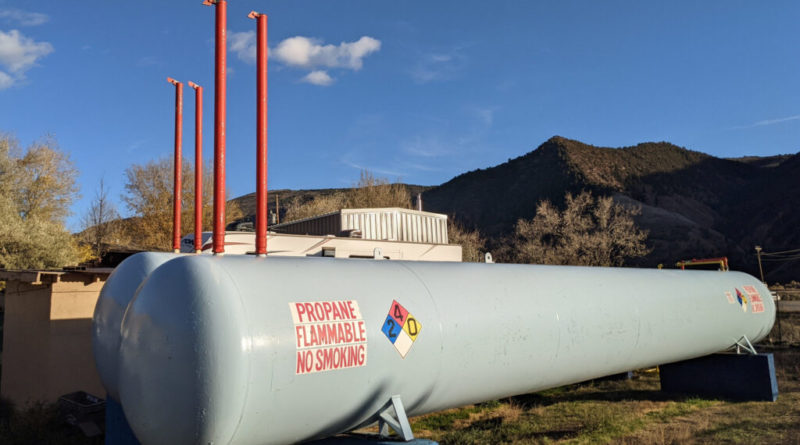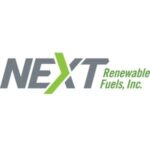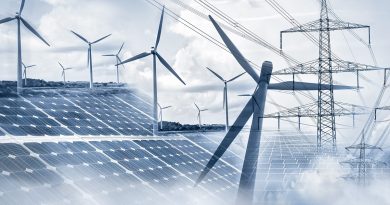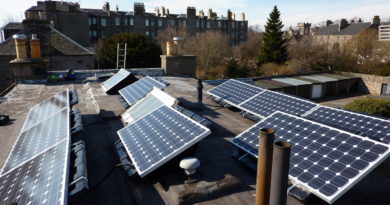In Colorado, President Biden’s infrastructure bill could help low-income residents ditch fossil fuels – Colorado Public Radio
Energy Disrupter
“A lot of what we’re trying to do is called beneficial electrification, which is moving from fossil fuels burned on-site to electric appliances that might eventually or currently rely on renewable energy,” Harry said.
Most buildings in Colorado rely on fossil fuels for interior and water heating. The combined greenhouse gas emissions of all those burners, along with some wood stoves, add up to about 10 percent of the state’s overall contribution to climate change, which is why many environmental groups want the state to push Coloradans to switch to electric appliances.
Harry said electrification is now far more feasible due to recent technological improvements in heat pumps, which work like reversible air conditioners. The devices offer an efficient option for electric-powered heating, but they’re currently still more expensive to operate than natural gas furnaces.
Propane, however, is more expensive than either natural gas or electricity — and the price is expected to surge even higher this winter.
“We saw this opportunity with propane-heated homes,” Harry said. “Propane tends to be about three times as expensive as natural gas on a per-energy basis. And so those homes are paying more for energy anyway.”
 Sam Brasch/CPR News
Sam Brasch/CPR NewsHigh-voltage stakes
Most of the homes in Dotsero draw fuel from a bus-sized propane tank just outside the entrance to the mobile home park.
Doug Jones, who led the weatherization project for the Northwest Colorado Council of Governments, contacted the park’s owners about replacing propane with electric heating and cooking systems last year. The owner had already attempted to switch the park natural gas but abandoned the idea when he learned it would require an expensive pipeline connecting the remote community in Eagle County. When Jones proposed electricity instead, the park’s owner was enthusiastic.
The organization finished electrifying the first three homes in the park in the fall of 2020. Jones expects 15 of the park’s 80 units to be fully electrified by the end of the year. The full set of improvements reduced average monthly utility bills for the upgraded households by $80 in the winter and $30 over the summer.
Dan Binning, the executive director of the Colorado Propane Gas Association, said even if those conversions saved residents money, electrification could be a risk in an era of unreliable electricity grids.
“Looked what happened in Texas last year,” Binning said. “Where there’s a natural disaster, they don’t bring in electric water heaters, electric heaters, electric stoves. They bring in propane.”
 Sam Brasch/CPR News
Sam Brasch/CPR NewsThe cost-cutting demonstrated in Dotsero could still help justify Colorado’s broader strategy. Under the rules for the federal program, the lifetime savings from any upgrade must exceed its upfront price. Other rules restrict how states can spend the federal money, only allowing work to switch homes from fossil fuels to electricity under narrow circumstances.
Harry said Colorado’s program won’t directly spend federal money on electrification projects and will instead use the funding boost from the infrastructure bill to expand its annual reach from about 2,000 to 3,000 homes. Additional state and local funding for weatherization, like a new surcharge on most Colorado customers’ utility bills, can then be freed to pay for “deeper retrofits,” including electrifying more propane-heated homes.
The short-term impact of the plan is small. The Colorado Weatherization Assitance Program has about 200 propane-heated homes on its upgrade list in a typical year, a tiny fraction of the more than 2 million households across Colorado.
Harry sees greater promise in creating demand for electrified homes. By buying and installing heat pumps, he said Colorado’s program could help bring down the cost of the devices and train a workforce of capable installers.
“That’s where the conversation really expands to, ‘OK, when does it start making sense to convert [natural] gas homes?”
Original Source: https://www.cpr.org/2021/11/17/infrastructure-bill-low-income-residents-fossil-fuels-heating/
















